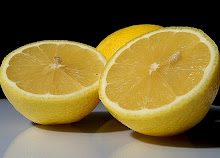Deoksugung Palace- Korea
 Located at the corner of Seoul's busiest downtown intersection, Deoksugung Palace is famous for its elegant stone-wall road. It is also the only palace that sits alongside a series of western style buildings that add to the uniqueness of the surrounding scenery. Deoksugung Palace originally belonged to Wolsandaegun (1454~1488), the older brother of King Seongjong (1469~1494) of the Joseon Dynasty. It became a proper palace when Gwanghaegun (1575~1641) ascended the throne and gave the palace the name Gyeongungung in 1611. Afterwards, the name was then changed back to its orginal title of Deoksugung.
Located at the corner of Seoul's busiest downtown intersection, Deoksugung Palace is famous for its elegant stone-wall road. It is also the only palace that sits alongside a series of western style buildings that add to the uniqueness of the surrounding scenery. Deoksugung Palace originally belonged to Wolsandaegun (1454~1488), the older brother of King Seongjong (1469~1494) of the Joseon Dynasty. It became a proper palace when Gwanghaegun (1575~1641) ascended the throne and gave the palace the name Gyeongungung in 1611. Afterwards, the name was then changed back to its orginal title of Deoksugung. Upon entering Deoksugung Palace and Daehanmun, visitors will cross the wide bridge of Geumcheon. The king's carriage would pass over this bridge during ancient times. The Beopjeon Building Junghwajeon is very stately, revealing of its long history. The Jeukjodang Building received its name from Gwanghaegun and In-Jo both ascended to the throne here. The front sign on Jeukjodang was written personally by Go Jong in 1905 after he became king. Hamnyeongjeon was where Go Jong slept, and Hamnyeong was named so to wish Go Jong lasting peace. The East Wing served as the King’s room, and the west wing was for the Queen. Jeonggwanheon was the first western style building built in the palace in 1900. Go Jong enjoyed drinking coffee and spending his free time here. The back of the building had secret passageways to the Russian Emissary, which still exist today.
Seokjojeon is the other western-style building that still remains in Gyeongwungung, and it was in the process of being built by a British man for his company when in 1905 the property rights were transferred to Japan. It was finally completed in 1910. After Gojong’s death, Seokjojeon became a Japanese art gallery open to the public. After the Korean Declaration of Independence, the American-Russian joint commission was held here as well in May 1946. The east wing of Seokjogwan building now serves as a Palace Treasure exhibition, and the west wing is used as part of National Modern Arts Center.
more on www.deoksugung.go.kr



0 Comments:
Post a Comment
Subscribe to Post Comments [Atom]
<< Home